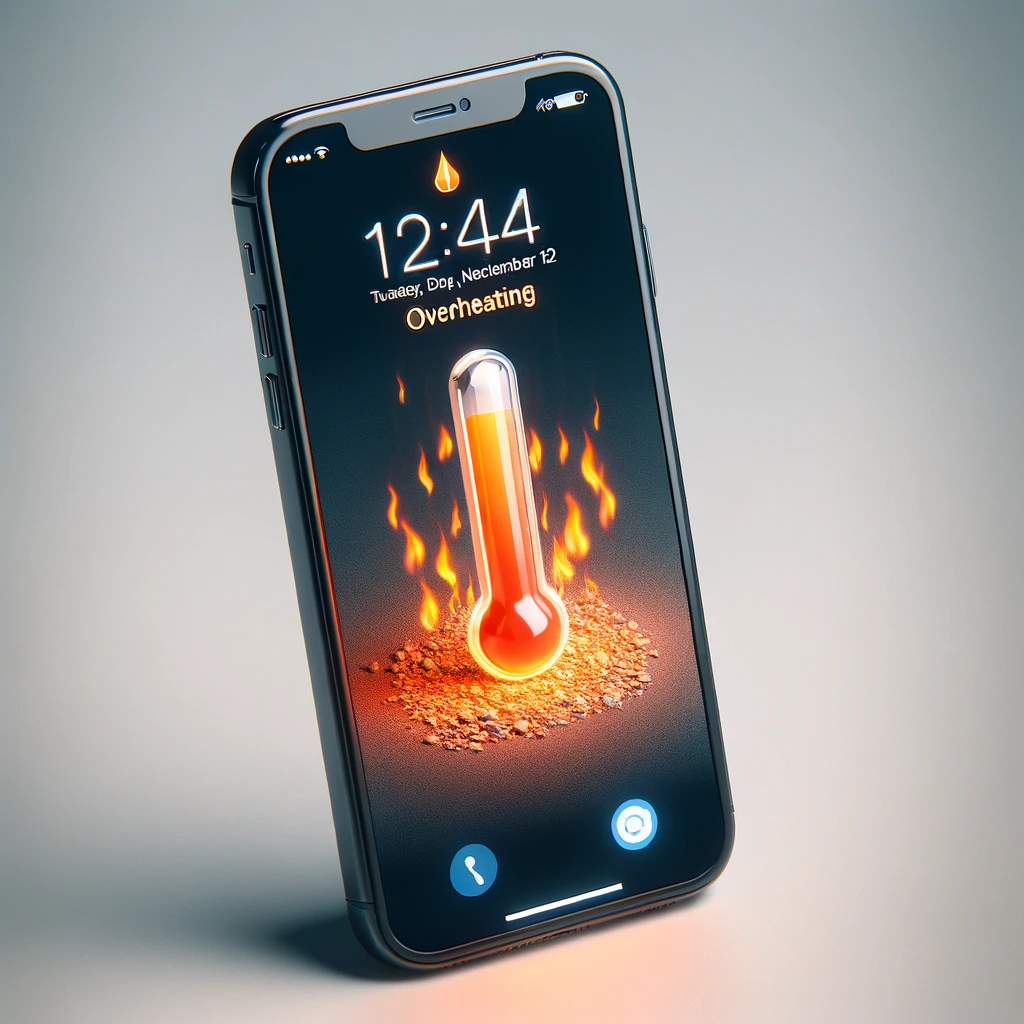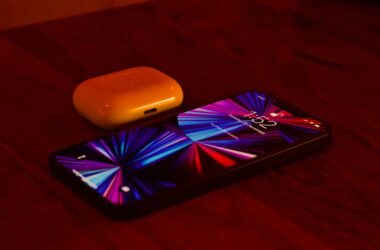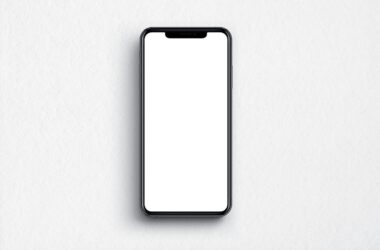Introduction
Have you ever noticed your iPhone getting uncomfortably hot? You’re not alone. iPhone overheating is a common issue that many users face. This can be not only uncomfortable but also detrimental to your device’s longevity and potentially hazardous. Understanding and addressing this problem is essential for maintaining your device’s performance and ensuring your safety.
In this post, we’ll delve deep into the reasons behind iPhone overheating, identify the signs, and explore both immediate and long-term solutions to keep your device cool. Whether you’re streaming videos in the sun or just find your phone heating up more than usual, we’ve got you covered with practical advice and easy-to-follow tips. Stay tuned to protect your iPhone from the heat and keep it running smoothly.
I: Understanding iPhone Overheating
1.1 Why iPhones Overheat: Unraveling the Heat Mystery
Every iPhone user might have experienced their device getting warm, but when does this warmth signal a real problem? It’s essential to discern the fine line between normal heat generation, which occurs due to your device’s processor working hard, and excessive overheating, which can be a sign of a more serious issue.
1.2 Unpacking the Causes: What Makes an iPhone Overheat?
iPhones, like all electronics, generate heat during operation. This heat typically arises from the device’s battery, processor, and screen. Under regular usage, such as making calls, browsing the internet, or using apps, it’s normal for your phone to get slightly warm. However, several factors can cause your iPhone to generate excessive heat:
- Intense Processes: High-definition video streaming, gaming, or using resource-intensive applications can push your iPhone’s processor, leading to higher heat production.
- Environmental Conditions: Leaving your iPhone in direct sunlight, in a hot car, or in other excessively warm environments can cause it to overheat.
- System Updates and Background Activities: Running a software update, restoring from a backup, or performing heavy synchronization tasks can also heat your iPhone.
- Faulty Hardware or Batteries: Damaged batteries or malfunctioning hardware components can lead to abnormal heat generation.
1.3 Recognizing the Signs: Normal Heat vs. Excessive Overheating
It’s crucial to understand the difference between your iPhone getting warm and it overheating. Here’s how to tell them apart:
- Normal Heat Generation: It’s typical for your iPhone to feel warm to the touch, especially during or after usage of apps that require more energy or after charging.
- Excessive Overheating: If your iPhone becomes too hot to hold, displays a temperature warning, or shuts down by itself, it’s overheating. This situation requires immediate attention as it could compromise your device’s integrity and your safety.
1.4 Scenarios That Lead to Overheating
Several common scenarios can lead to your iPhone overheating. Understanding these can help you avoid potential heat issues:
- Using your iPhone in high temperatures: Operating your iPhone in hot conditions can push your device beyond its thermal limits.
- Continuous usage: Prolonged use of GPS, gaming, or video streaming can cause your iPhone to overheat.
- Charging mishaps: Using non-certified chargers or charging your device while using it intensively can generate excessive heat.
- Software glitches: Sometimes, outdated software or apps running in the background can cause your iPhone to overheat.
Understanding the causes and signs of iPhone overheating is the first step toward keeping your device cool and functioning optimally. In the following sections, we’ll dive deeper into immediate and long-term solutions to prevent and address iPhone overheating issues. Stay tuned to ensure your device stays cool under pressure.
2: Common Causes of iPhone Overheating
Overheating can turn your trusty iPhone from a source of productivity and entertainment into a cause for concern. To prevent and solve overheating issues, it’s crucial to understand the typical culprits behind this uncomfortable warmth. Let’s dive into the common causes and how they might be heating up your device.
2.1 Intensive App Usage and Background Processes
One of the primary reasons for an iPhone heating up is the intensive use of applications or numerous processes running in the background:
- Resource-Heavy Apps: Gaming, streaming high-definition videos, or using augmented reality applications require significant processing power and battery usage, leading to increased heat production.
- Background App Refresh: Apps updating content in the background (like email syncing, social media updates, or weather apps) can cause your phone to work harder than necessary, especially if multiple apps are updating simultaneously.
- Solution Tips: Limit the use of high-intensity apps, especially in warm environments. Regularly close unused apps and disable background app refresh for applications that don’t need constant updating.
2.2 Exposure to External Heat Sources
Your iPhone is designed to operate within certain temperature ranges. Exposure to external heat sources can significantly affect its performance:
- Direct Sunlight: Leaving your iPhone in direct sunlight can raise its temperature quickly.
- Hot Environments: Using your iPhone in hot areas, like near a heater or in a parked car on a sunny day, can lead to overheating.
- Solution Tips: Avoid leaving your iPhone in direct sunlight and try to use it in cooler, shaded areas. If your iPhone gets too hot, remove it from the heat source and let it cool down before using it again.
2.3 Charging Malfunctions
Charging your iPhone should be a straightforward process, but certain conditions can make it a contributing factor to overheating:
- Faulty Chargers or Cables: Non-certified chargers or damaged cables can cause your iPhone to heat up excessively during charging.
- Using While Charging: Engaging in activities that consume a lot of power, like gaming or video streaming, while your iPhone is charging, can also lead to overheating.
- Solution Tips: Always use Apple-certified charging accessories. Avoid using your iPhone for intensive tasks while it is charging.
2.4 Software Glitches and iOS Updates
Software is the soul of your iPhone, but it can also be a source of heat:
- Outdated Apps and iOS: Running outdated software can cause compatibility issues and make your iPhone work harder, generating more heat.
- Post-Update Overheating: It’s normal for your iPhone to be slightly warmer during or right after an iOS update due to the installation processes and initial reindexing.
- Solution Tips: Keep your apps and iOS up to date. If your iPhone continues to overheat after an update, restart it and ensure all apps are updated or temporarily remove non-essential apps.
3: How to Fix an iPhone Overheating Problem
When your iPhone starts to overheat, it can be a source of discomfort and concern. However, there are several steps you can take to cool down your device and prevent future episodes. Here’s a comprehensive guide to help you manage and mitigate iPhone overheating issues:
3.1 Immediate Solutions for Cooling Down Your iPhone
If your iPhone is overheating, your first priority should be to cool it down safely and quickly. Here’s how:
- Turn Off the Device: Power down your iPhone to give it a chance to cool off. Hold the side button and either volume button, then slide to power off.
- Remove the Case: Take off your iPhone’s case to help dissipate the heat more quickly.
- Avoid Sunlight: Move your iPhone away from direct sunlight or hot environments.
- Cool Environment: Place your iPhone in a cooler environment, ideally somewhere with air conditioning or a fan, but avoid extreme cold to prevent condensation inside the device.
- Limit Usage: Once turned back on, avoid using intensive apps or features until your iPhone has returned to normal temperatures.
3.2 Managing Apps and Settings to Reduce Heat
Several adjustments in how you use your iPhone can significantly reduce heat generation:
- Update Apps and iOS: Ensure all your apps and your iPhone’s iOS are up to date. Developers often release updates that optimize app performance and efficiency, reducing heat generation.
- Close Unnecessary Apps: Double-tap the Home button or swipe up from the bottom (depending on your iPhone model) to view all open apps and swipe them away to close.
- Background App Refresh: Turn off Background App Refresh for apps that don’t need to be updated constantly. Go to Settings > General > Background App Refresh.
- Location Services: Limit the use of Location Services to necessary apps only. Navigate to Settings > Privacy > Location Services.
- Lower Screen Brightness: Reduce your screen brightness and set your screen to auto-lock sooner to reduce battery and processor use.
3.3 Handling Battery and Charging-Related Overheating
Battery and charging practices are often at the heart of overheating issues:
- Use Official Chargers: Always use Apple-certified chargers and cables to prevent overheating caused by charging malfunctions.
- Avoid Using While Charging: Try not to use your iPhone for intensive tasks while it’s charging, as this can generate excess heat.
- Remove Certain Accessories: If you’re using a battery pack or case while charging, remove it as these can hold in heat.
- Check Battery Health: Go to Settings > Battery > Battery Health. If your battery’s maximum capacity is significantly degraded, consider getting a battery replacement from an authorized service provider.
4: Preventive Measures to Avoid iPhone Overheating
Keeping your iPhone cool is not just about addressing issues as they arise; it’s also about taking proactive steps to prevent overheating in the first place. Here are some best practices for iPhone usage, advice on choosing the right accessories, and recommendations for regular maintenance:
4.1 Best Practices for iPhone Usage
Adopting good usage habits can significantly reduce the risk of your iPhone overheating:
- Monitor App Usage: Be mindful of the time you spend on apps that are heavy on graphics and processing, such as games or video streaming services. Limit your use of these apps, especially in warm environments.
- Adjust Settings for Optimal Performance: Lower the screen brightness and turn on Auto-Brightness. Disable unnecessary features such as Bluetooth and Wi-Fi when not in use. Use Airplane Mode in low or no-coverage areas to prevent your iPhone from constantly searching for a signal.
- Avoid Prolonged Exposure to Sun: Never leave your iPhone in direct sunlight or in a hot car. Even a few minutes in high temperatures can cause your device to overheat.
- Store Properly: When not in use, store your iPhone in a cool, dry place away from direct sunlight or heat sources.
4.2 Advice on Protective Cases and Accessories
The right case and accessories can make a difference in keeping your iPhone cool:
- Breathable Cases: Opt for a case made from a breathable material like silicone or leather. Avoid heavy, insulating cases that can trap heat.
- Avoid Charging Cases: While convenient, charging cases can generate excess heat, especially if they malfunction. Use these sparingly and monitor your iPhone’s temperature.
- Use Quality Chargers: Always use Apple-certified charging accessories to ensure optimal charging performance and safety.
4.3 Regular Maintenance and Software Updates
Keeping your iPhone in top condition is crucial for preventing overheating:
- Software Updates: Regularly update your iPhone’s iOS to the latest version. Software updates often include fixes for bugs that can cause overheating.
- Clean Your iPhone: Dust and debris can clog your iPhone’s vents and insulate heat. Use a soft, dry cloth to clean the outside of your device and its ports gently.
- Battery Health: Check your iPhone’s battery health periodically (Settings > Battery > Battery Health). Consider replacing the battery if its performance is significantly degraded.
- Avoid Heavy Multi-tasking: Refrain from using multiple apps simultaneously that demand high processing power.
5: Solutions for Specific Scenarios
Sometimes, iPhone overheating occurs under specific conditions such as while charging, after an iOS update, or in extreme weather. Here’s how to address these particular scenarios effectively:
5.1 iPhone Overheating While Charging
Charging should be a time for your iPhone to rejuvenate, not overheat. If your iPhone gets hot while charging, follow these steps:
- Use Official Apple Chargers: Non-certified chargers can cause overheating and other damage. Always use Apple-certified charging accessories.
- Remove the Case: Some cases might insulate heat. Remove your iPhone from its case while charging to help it stay cool.
- Stop Using the Phone: Avoid using your iPhone for performance-intensive tasks while it’s charging, as this increases heat production.
- Check for Damage: Inspect your charging cable and adapter for damage. Faulty equipment can lead to overheating and should be replaced immediately.
- Optimal Charging Environment: Charge your iPhone in a cool, well-ventilated area. Avoid charging it under pillows, on beds, or in direct sunlight.
5.2 Overheating Issues Post iOS Update
It’s not uncommon for iPhones to overheat following an iOS update, primarily due to the increased background activity as the new system settles in. Here’s what to do:
- Give It Time: Allow your iPhone to complete its post-update processes like indexing and app updates, which can take several hours to a day.
- Restart Your iPhone: After the update, perform a soft reset by turning your iPhone off and then back on to help it recalibrate.
- Check for App Updates: Ensure all your apps are updated to the latest version compatible with the new iOS.
- Reset Settings: If overheating persists, try resetting all settings (Settings > General > Reset > Reset All Settings). Note that this won’t erase your data, but it will reset system settings like Wi-Fi passwords and wallpaper.
5.3 Managing iPhone Temperature in Extreme Weather Conditions
Extreme temperatures, both hot and cold, can affect your iPhone’s performance:
- Avoid Direct Sunlight: Never leave your iPhone in direct sunlight or in a hot vehicle. Always keep it shaded and cool.
- Cold Weather Tips: In cold conditions, keep your iPhone close to your body for warmth. Avoid using it outside for prolonged periods in freezing temperatures.
- Cooling Down: If your iPhone overheats in hot weather, turn it off, move it to a cooler environment, and give it time to reach a normal temperature.
- Protective Accessories: Use thermal protection cases designed for extreme temperatures. These can help regulate your iPhone’s temperature.
6: When to Seek Professional Help
While many iPhone overheating issues can be resolved with the steps outlined above, there are times when you might need to seek professional help. Understanding the signs that indicate a deeper problem can save you time and prevent further damage to your device.
6.1 Signs That Your Overheating Issue Needs Expert Attention
- Consistent Overheating: If your iPhone continues to overheat despite following all recommended solutions and being in normal environmental conditions, it may indicate an internal problem.
- Physical Damage: If your iPhone has visible signs of damage, such as a swollen battery or cracked back, which could contribute to overheating, professional service is required.
- System Failures: If your iPhone frequently crashes, restarts by itself, or displays the temperature warning even when it doesn’t feel hot, there might be a hardware or software issue needing expert diagnosis.
- Charging Issues: If your iPhone gets excessively hot only while charging and you’ve used different official chargers without success, the problem could be related to the battery or internal circuits.
6.2 How to Prepare Your iPhone for a Service Appointment
Before you take your iPhone for service, take the following steps to protect your data and speed up the repair process:
- Back Up Your Data: Use iCloud or iTunes to back up your iPhone, ensuring you don’t lose your photos, messages, and other important data.
- Update Your Software: Ensure your iPhone is running the latest iOS version, as this might resolve the issue without needing a repair.
- Reset Your iPhone: Consider erasing all content and settings (after backing up) to remove any software issues that might be causing the overheating.
- Remove SIM and Accessories: Take out your SIM card and any accessories attached to your iPhone before handing it over.
6.3 Warranty and Support Options for iPhone Overheating Issues
Check your iPhone’s warranty status by entering its serial number on Apple’s website. If your device is still under warranty, you may be eligible for a free repair. Even if it’s out of warranty, it’s worth contacting Apple Support or visiting an Apple Store to understand your options, as overheating can be a sign of a significant issue.
Conclusion
In this blog post, we’ve explored the multifaceted issue of iPhone overheating, covering everything from common causes and immediate fixes to preventive measures and signs that professional help is needed. Remember, while iPhones are designed to handle a wide range of temperatures, persistent overheating should not be ignored.
We encourage you to take overheating issues seriously and to apply the solutions provided to protect your device and personal safety. Your iPhone is an investment worth looking after, and understanding how to maintain its temperature is key to its longevity and performance.
Have you experienced issues with your iPhone overheating? Or do you have additional tips and solutions that have worked for you? Share your experiences or questions in the comments section below. Your feedback not only helps us but also supports our community in navigating these hot waters.








